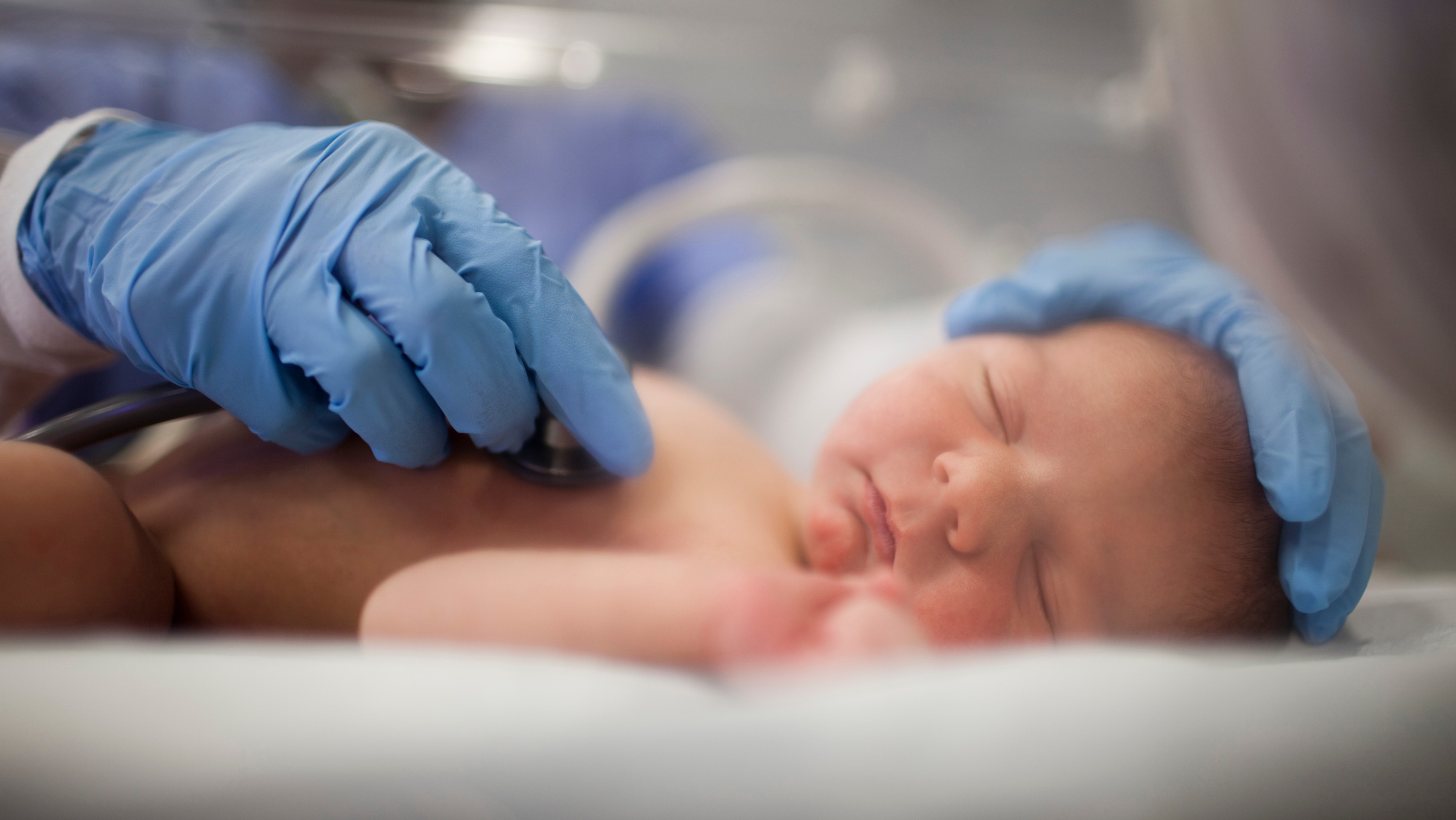Delivering critical early-life medication to newborns at risk of cerebral palsy from suspected brain injury will be safer thanks to a University of Alberta research team.
Doctors have long known that brain injury during labour and delivery is a leading cause of cerebral palsy, a group of conditions affecting movement and posture, but they’ve had little ability to help their tiny patients. In addition to lacking diagnostic tools to confirm the presence of a brain injury, doctors have had few interventions at their disposal.
“It’s a dual effect,” says Larry Unsworth, a professor of biomedical engineering and member of the Women and Children’s Health Research Institute.
One kind of perinatal brain injury caused by oxygen deprivation, hypoxic-ischemic encephalopathy (HIE), is sometimes treated with therapeutic hypothermia, in which the infant’s body is cooled to slow the metabolism of brain cells and stop further damage from occurring. Unfortunately, this approach has been shown to be ineffective in treating moderate to severe HIE.
With support from the Stollery Children’s Hospital Foundation through WCHRI, Unsworth set out to find a solution to this problem alongside pediatrics professor Jerome Yager and research team members Jung-Lynn Jonathan Yang, Rukhmani Narayanamurthy and Ed Armstrong.
“We wondered if there was a way to target the change in the local brain tissue caused by HIE to reduce damage in the brain,” says Unsworth. “Easy question to ask, hard to do.”
The team realized the answer might lie in finding a safer way to deliver anti-inflammatory medications, which could augment the effects of therapeutic hypothermia. The drugs come with known health risks, but Unsworth and the team wondered whether there was a way to transport the medication to the site of the brain injury and minimize damaging other organs along the way.
“So that’s what we did — we developed a self-assembled, peptide system that could carry dexamethasone (a corticosteroid) to the site of injury in the brain,” he said.
The key to the system’s effectiveness is cooling only the infant’s head while keeping the body at normal temperature. Molecules of the drug are not activated until they move through the body and past the blood-brain barrier into the cooler temperatures of the brain. Because the protein delivery system administers such a small amount of the drug, it is also safe to give preventatively.
“The key was to enable immediate therapeutic access to the newborn’s brain as early as possible after birth and during brain hypothermia, which is standard of care across all neonatal intensive care units,” says Yager.
Unsworth and his colleagues are now pursuing additional funding to continue developing the technology so it can be commercialized and put into the hands of doctors.
“Targeted treatment to these injured cells could dramatically improve the outcomes of children who suffer from this condition,” he says.
